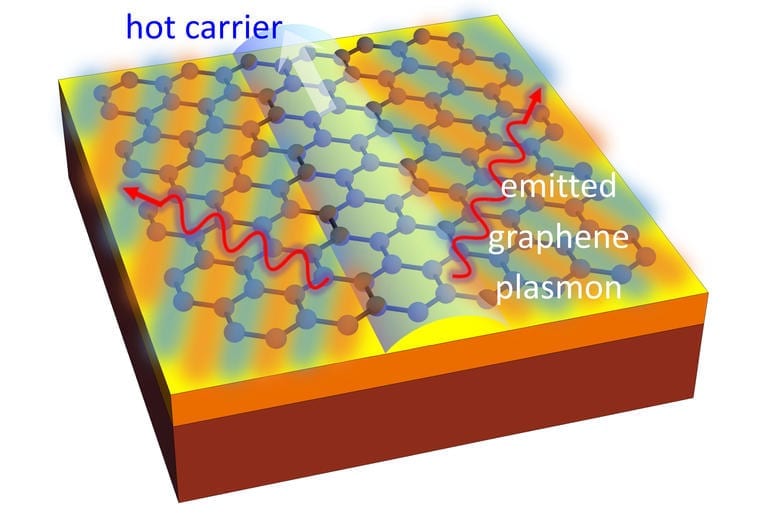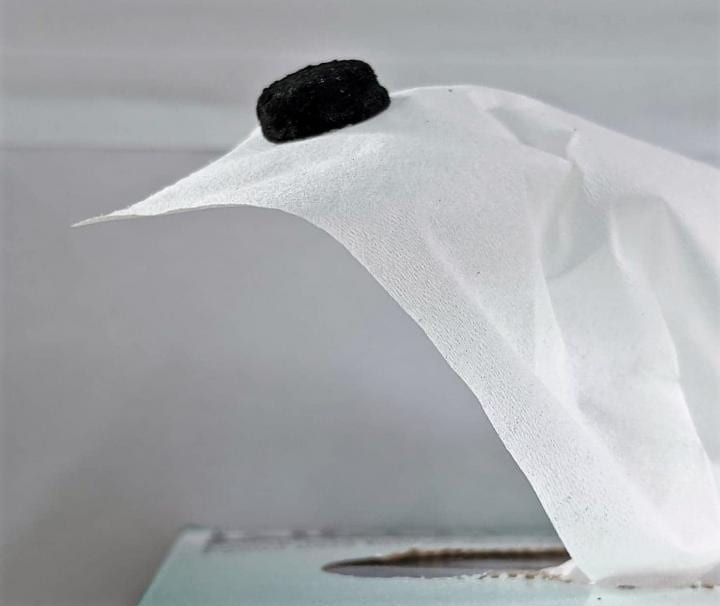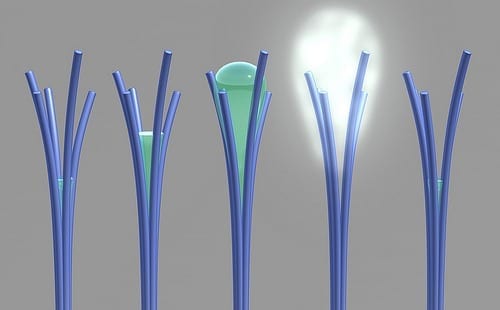
Image: MIT
Researchers use graphene to create a new way of converting electricity into light, delivering the possibility of dramatic speed improvements over today’s chips.
US Army-funded researchers at MIT believe an optical equivalent of a “sonic boom” created using graphene could make chips a million times faster than they are today.
Researchers at MIT and several other universities have discovered that graphene can be used to slow light down below the speed of electrons to create an intense beam of light.
The researchers call the effect an “optic boom”, since it is similar to the sonic boom caused by shock waves when a jet breaks the speed of sound.
In graphene, an electron “spews out plasmons” when it moves faster than the speed of the trapped light. The researchers believe this new way of converting electricity into light could pave the way for light-based circuits in ultra-compact computing devices.
MIT highlights that the research was supported by US Army Research Laboratory and the US Army Research Office, through MIT’s Institute for Soldier Nanotechnologies.
MIT postdoc Ido Kaminer explains that using light instead of flowing electrons to move and store and data could push operating speeds up to vastly higher levels than those achieved by today’s chips.
Although theoretical at the moment, the discovery adds a new thread to the story of graphene’s potential in computing chips. Scientists at IBM Research have been exploring how graphene can be used to create new chips that exploit the way electrons move faster through graphene than through other semiconductor materials.
The so-called optic boom also exploits this feature of graphene, which MIT notes allows electrons to pass through the material at up to a million meters per second, or 1/300 the speed of light in a vacuum.
Learn more: MIT graphene breakthrough could make chips one million times faster
The Latest on: Graphene optic boom
[google_news title=”” keyword=”graphene optic boom” num_posts=”10″ blurb_length=”0″ show_thumb=”left”]
via Google News
The Latest on: Graphene optic boom
- Graphene at 20: why the ‘wonder material’ is finally coming goodon April 30, 2024 at 6:31 am
Strong, light and with amazing electronic properties, graphene has always been touted as the “wonder material”. But two decades after it was first isolated, James McKenzie believes the graphene is ...
- Graphene-infused glass fiber fabric bridges conductivity with electromagnetic transparencyon April 28, 2024 at 5:00 pm
Attempts to combine these disparate properties often fell short. Recent advancements in two-dimensional materials, particularly graphene, have opened new avenues to tackle this challenge. Graphene ...
- The Best PC Gaming Headsets in 2024on April 16, 2024 at 4:30 pm
Arguably, three major PC gaming peripherals are essential and require detailed research before making the purchase decision. These are gaming mice, keyboards, and gaming headsets. Not only do gaming ...
- Logitech G Astro A50 X Reviewon January 4, 2024 at 3:16 pm
In the world of gaming headsets, few names are better known than Astro. Under its parent company, Logitech, the Astro A50 X (available at Logitech) is an upgrade to 2019’s fourth-generation A50s.
via Bing News










